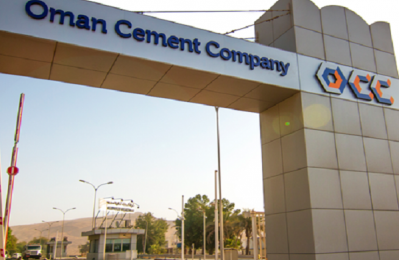$400bn drop in energy investment likely this year: IEA
The global economic shock caused by the Covid-19 pandemic is having widespread and dramatic effects on investments and 2020 is set to see the largest decline in energy investment on record, a reduction of almost $400 billion, says a report.
More Stories
The worldwide economic shock caused by the Covid-19 pandemic is having widespread and often dramatic effects on investments in the energy sector, said the International Energy Agency's (IEA) World Energy Investment 2020 report.
At the start of the year, IEA's tracking of company announcements and investment-related policies suggested that worldwide capital expenditures on energy might edge higher by 2% in 2020. This would have been the highest uptick in global energy investment since 2014. The spread of the Covid-19 pandemic has upended these expectations, and 2020 is now set to see the largest decline in energy investment on record, a reduction of one-fifth – or almost $400 billion – in capital spending compared with 2019, the report says.
The worldwide shock caused by the coronavirus (Covid-19) pandemic has drastically altered the course of the global economy and energy markets.
The baseline expectation for 2020 is a widespread global recession caused by prolonged restrictions on mobility and social and economic activity. With a gradual opening up of economies currently under lockdown, the recovery is U-shaped and accompanied by a substantial permanent loss of economic activity. Global gross domestic product (GDP) is assumed to decline by 6% in 2020, an outlook broadly consistent with the International Monetary Fund (IMF) longer outbreak case (IMF, 2020), it says.
The effects on energy investment in this scenario come from two directions. First, spending cuts due to lower aggregate demand and reduced earnings; these cuts have been particularly severe in the oil industry, where prices have collapsed. Second, the practical disruption to investment activity caused by lockdowns and restrictions on the movement of people and goods.
Almost all investment activity has faced some disruption due to lockdowns, whether because of restrictions on the movement of people or goods, or because the supply of machinery or equipment was interrupted. But the larger effects on investment spending in 2020, especially in oil, stem from declines in revenues due to lower energy demand and prices, as well as more uncertain expectations for these factors in the years ahead, it says.
Oil (50%) and electricity (a further 38%) were the two largest components of worldwide consumer spending on energy in 2019. However, IEA estimates that spending on oil will plummet by more than $1 trillion in 2020, while power sector revenues drop by $180 billion (with demand and price effects accompanied in many countries by a rise in non‑payment). Among other implications, this would mean an historic switch in 2020 as electricity becomes the largest single element of consumer spending on energy, it says.
Not all of these declines are felt directly by the energy industry. Energy-related government revenues – especially in the main oil and gas exporting countries – have been profoundly affected, with knock-on effects on the budgets available to state-owned energy enterprises.
The revisions to planned spending have been particularly brutal in the oil and gas sector, where te a year-on-year fall in investment in 2020 of around one-third. This has already triggered an increase in borrowing as well as the likelihood that restrained spending will continue well into 2021, the report says.
The power sector has been less exposed to price volatility, and announced cuts by companies are much lower, but a fall of 10% in capital spending is estimated. In addition, sharp reductions to auto sales and construction and industrial activity are set to stall progress in improving energy efficiency, the IEA report says.
Overall, China remains the largest market for investment and a major determinant of global trends; the estimated 12% decline in energy spending in 2020 is muted by the relatively early restart of industrial activity following strong lockdown measures in the first quarter.
The United States sees a larger fall in investment of over 25% because of its greater exposure to oil and gas (around half of all US energy investment is in fossil fuel supply). Europe’s estimated decline is around 17%, with investments in electricity grids, wind and efficiency holding up better than distributed solar PV and oil and gas, which see steep falls. Developing countries, especially those with significant hydrocarbon industries, see the most dramatic effects of the crisis, as falling revenues pass through more directly to lower funds for investment.
Overall, ongoing investment in renewable power projects is expected to fall by around 10% for the year, less than the decline in fossil fuel power. Capacity additions are set to be lower than 2019 as project completions get pushed back into 2021. Final investment decisions (FIDs) for new utility-scale wind and solar projects slowed in the first quarter of 2020, back to 2017 levels. Distributed solar investments have been more dramatically hit by lower consumer spending and lockdowns.
There are also some worrying signs in the data for the energy sector as a whole. In recent years the share of energy investment in GDP has declined and is set to fall to under 2% in 2020 – down from around 3% in 2014. Economy-wide investment also declined as a share of GDP over this period, but the declines in energy have been particularly steep. In part, this reflects a retreat from the boom years of oil and gas spending in the earlier part of this decade. However, the trend is visible too in the power sector and elsewhere, reflecting the lack of progress in boosting key clean energy technologies at the pace required by rising global needs and the imperative to address climate change, it said.
The Covid-19 pandemic has brought with it a major fall in demand, with high uncertainty over how long it will last. Under these circumstances, with overcapacity in many markets, a cut in new investment becomes a natural and even a necessary market response, it says.
However, the slump in investment may not turn out to be proportional to the demand shock, and the lead times associated with energy investment projects mean that the impact of today’s cutbacks on energy supply (or demand, in the case of efficiency) will be felt only after a few years, when the world may be well into a post‑recovery phase. As such, there is a risk that today’s cutbacks lead to future market imbalances, prompting new energy price cycles or volatility, said the report.
In addition, even before the crisis, the flow of energy investments was misaligned in many ways with the world’s future needs. Market and policy signals were not leading to a large-scale reallocation of capital to support clean energy transitions. There was a large shortfall in investment, notably in the power sector, in many developing economies where access to modern energy is not assured. Although today’s crisis in some ways represents an opportunity to change course, it also has the potential to exacerbate these mismatches and take the world further away from achieving its sustainable development goals.
The implications in practice will depend on a few key variables. The duration of the disruptions to economic activity and the shape of the recovery are major uncertainties. So too are the policy response to the crisis and, crucially, the extent to which energy investment and sustainability concerns are baked into recovery measures. Among consumers, it remains to be seen whether the crisis has fundamentally reset views on mobility, tourism, or working and shopping from home, it continued.
There are questions too about the shape of the post‑crisis energy industry and its financial strength, strategic orientation and appetite for risk. And finally, there are the economic factors that drive investment trends, in particular whether oil prices remain low, and how quickly costs for some key clean energy technologies continue to come down.
If the world were to return to anything like its pre-crisis pathway (as might be expected in the absence of a notable policy shift) then a different set of risks come into view. In oil markets, for example, if investment stays at 2020 levels then this would reduce the previously-expected level of supply in 2025 by almost 9 million barrels a day, creating a clear risk of tighter markets if demand starts to move back towards its pre-crisis trajectory, it warned. - TradeArabia News Service
Projects















